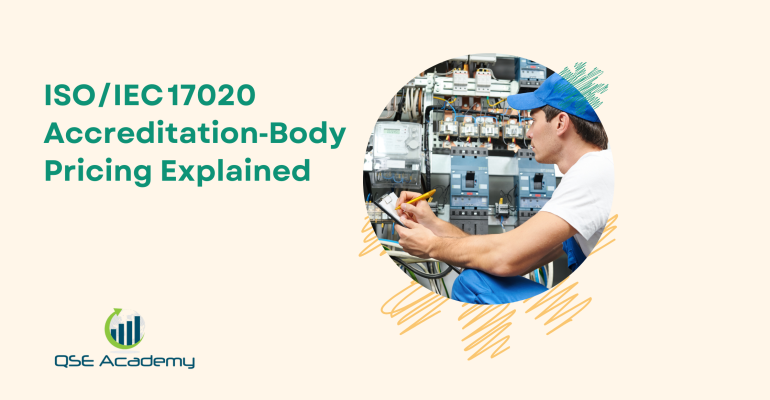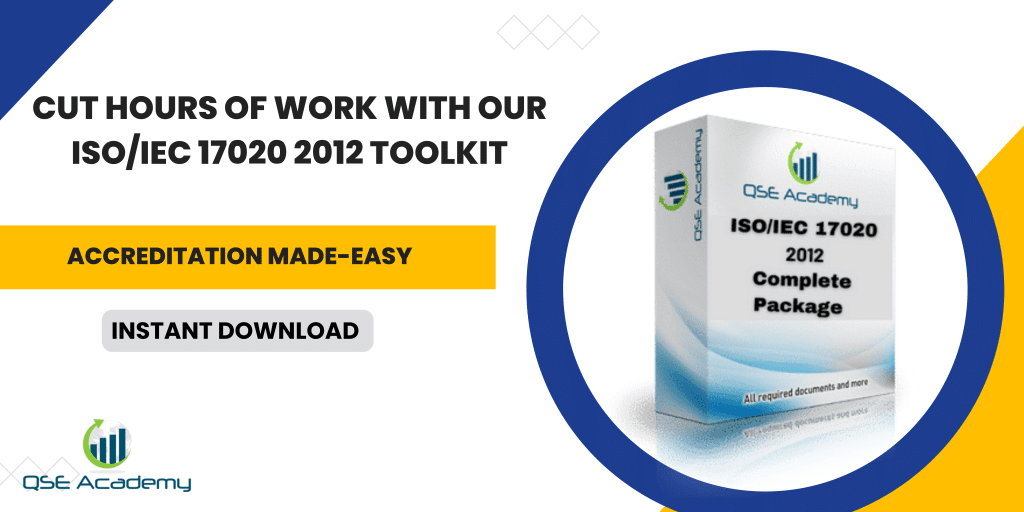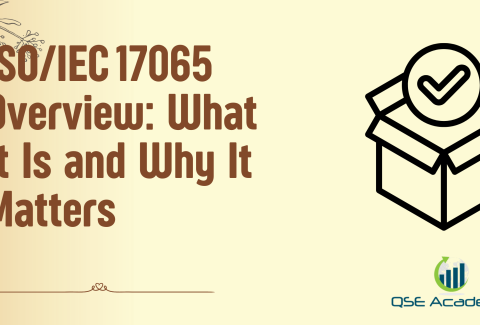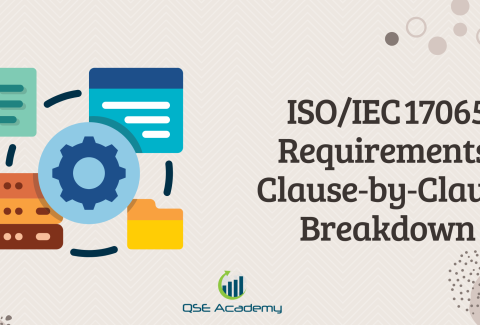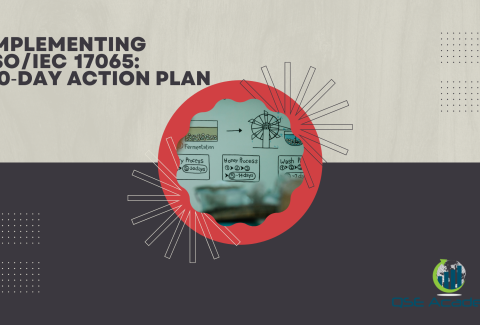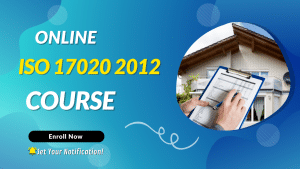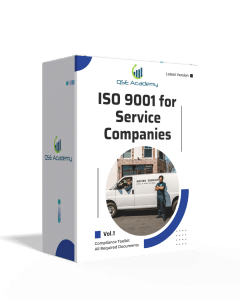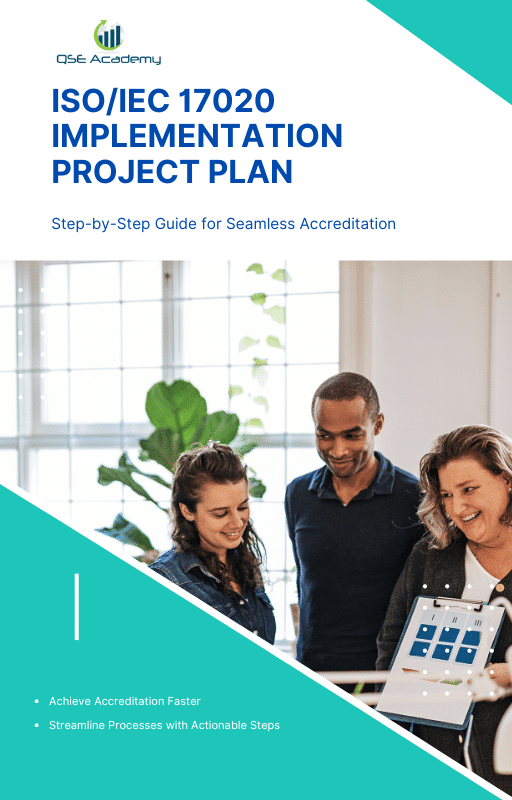ISO/IEC 17020 Accreditation‑Body Pricing Explained
Last Updated on October 22, 2025 by Hafsa J.
Understanding ISO/IEC 17020 Accreditation Costs with Expert Insight
Let’s be honest—most inspection bodies have no idea what’s actually behind ISO/IEC 17020 accreditation pricing until they start asking for quotes. One client once told me, “I thought it was just a fixed fee—like getting a certificate.” The truth? Accreditation costs are far from one-size-fits-all.
I’ve helped inspection bodies across different industries—construction, calibration, oil & gas—prepare for ISO/IEC 17020 accreditation. What I’ve noticed is this: the pricing models used by accreditation bodies (ABs) depend on far more than paperwork or a single audit. They’re influenced by technical scope, assessor time, travel costs, and even the country’s regulatory structure. Understanding these details upfront can save you thousands of dollars and months of delay.
Here’s what this article will do for you:
-
Break down how accreditation bodies calculate their fees so you know what each line item really means.
-
Show you what drives the biggest cost differences between ABs in different regions.
-
Give you a practical roadmap to budget and negotiate smarter—without compromising recognition or quality.
By the end, you’ll understand exactly what you’re paying for, why it matters, and how to plan your ISO/IEC 17020 accreditation budget like an expert—not a first-timer.
What Is ISO/IEC 17020 Accreditation and Why Costs Differ Across Bodies
Here’s something I see all the time: inspection bodies think ISO/IEC 17020 accreditation is just a certificate you buy once and renew every few years. But it’s not that simple. Accreditation means your inspection body has been independently verified as competent and impartial—by an official accreditation body (AB), usually recognized under ILAC (the International Laboratory Accreditation Cooperation).
In simple terms, accreditation is the “passport” that lets your inspection reports be trusted internationally. Whether you’re a Type A, B, or C inspection body, your AB evaluates your management system, staff competence, inspection methods, and impartiality. The deeper or more technical your scope, the more time (and cost) it takes for assessors to evaluate your operations.
Now, why do costs differ so much between accreditation bodies?
Let’s break it down:
-
Country economics: ABs in Europe or North America often charge higher day rates due to labor costs and assessor fees.
-
Scope complexity: A body inspecting pressure vessels or cranes will pay more than one doing simple visual inspections.
-
Assessment logistics: On-site visits, travel days, and assessor team size all add up.
-
Recognition level: ILAC MRA signatory bodies may charge slightly more—but their accreditation has global weight.
In my experience, the biggest pricing shock comes from travel and assessor time. One client in Tunisia, for example, received two quotes—one from their local AB and another from a European one. Both had the same base application fee, but the European AB’s travel and per diem nearly doubled the total cost.
💡 Pro Tip: Always ask for a detailed cost breakdown—not just the total amount. This helps you spot hidden travel charges, document review fees, or additional assessor days early.
🚫 Common Pitfall: Some inspection bodies pick the cheapest AB without checking ILAC recognition. The result? Their reports get rejected abroad, forcing them to re-accredit later—twice the cost, twice the hassle.
Now that you understand what accreditation really means and why prices vary, let’s dig into how accreditation bodies actually structure their fees—so you can budget like a pro and avoid any surprises.
Breakdown of ISO/IEC 17020 Accreditation-Body Pricing Structure
Once you’ve compared a few accreditation quotes, you’ll notice something: every accreditation body uses the same basic components, but the way they charge for them can vary widely. Understanding this breakdown is the key to avoiding budget surprises later on.
Here’s how ISO/IEC 17020 accreditation fees are usually structured:
| Fee Type | What It Covers | Typical Range (USD) | Notes |
|---|---|---|---|
| Application Fee | Reviewing your eligibility and submitted forms | 300 – 800 | One-time, non-refundable |
| Document Review Fee | Assessment of your quality manual, procedures, and records | 1,000 – 2,000 | Based on scope and document volume |
| On-Site Assessment | Assessor day rates, travel, and accommodation | 1,500 – 4,000 per day | Usually the largest cost element |
| Annual Maintenance Fee | Keeping your accreditation active | 500 – 1,200 per year | Paid even if no reassessment that year |
| Surveillance / Reassessment | Follow-up visits to confirm ongoing compliance | 1,000 – 3,000 | Every 12 – 24 months depending on AB policy |
In practical terms, a medium-sized inspection body with three technical scopes can expect an initial accreditation cost of roughly 7,000 – 12,000 USD. That includes document review, assessor time, and the first on-site visit.
Here’s what I’ve seen work best: organizations that prepare thoroughly before submission—solid documentation, trained staff, internal audits done—often save one or two assessor days. That alone can reduce the total bill by 20 percent or more.
Pro Tip: Build accreditation costs into your annual quality-management budget rather than treating them as a one-off project. This keeps your cash flow predictable when surveillance or reassessment fees come up.
Common mistake: Many inspection bodies forget to budget for assessor travel or additional technical experts if their scope is specialized. Those extras can double the expected invoice.
Now that you know how each fee fits together, the next step is understanding what actually drives these numbers up or down—the hidden factors that determine why one accreditation quote can be twice another.
Key Factors Influencing ISO/IEC 17020 Accreditation Costs
Now that we’ve covered the basic structure, let’s get into what really drives ISO/IEC 17020 accreditation costs up—or helps keep them manageable. I’ve seen inspection bodies with nearly identical scopes receive quotes that differ by thousands of dollars, and it always comes down to a few recurring factors.
1. Type of Inspection Body (A, B, or C)
Type A (independent) bodies often undergo more extensive impartiality checks, while Type B or C (in-house or affiliated) may have additional verification steps for conflict-of-interest controls. More evaluation time means more assessor days—and more cost.
2. Scope Complexity
A visual inspection scope is quicker to assess than a technical one involving non-destructive testing, pressure vessels, or electrical safety. The broader or more technical your inspection methods, the more assessors and days you’ll need.
3. Number of Sites and Staff
Multi-site operations increase costs simply because assessors must visit each location or sample them. Larger staff counts also mean more interviews, competence checks, and document reviews.
4. Travel and Logistics
If your assessors must travel internationally, expect to cover airfare, hotel, and daily allowances. I once saw a small inspection company in North Africa spend nearly half its total cost on assessor travel from Europe—something that could have been avoided by choosing a regional accreditation body.
5. Accreditation-Body Policies
Each accreditation body sets its own pricing model. Some charge a flat rate per day, others add administration fees for each scope category. A few offer remote assessment options that can reduce costs, but not all scopes qualify.
6. Language and Translation Needs
If your documentation isn’t in the assessor’s language, translation adds time and sometimes an extra expert to the team. It’s a small detail that can easily add a few hundred dollars per review day.
Pro Tip: Before applying, ask the accreditation body for a detailed quotation that lists assessor days, travel, and document review time separately. That transparency helps you compare offers accurately instead of relying on headline prices.
Common Pitfall: Many inspection bodies underestimate scope extensions—adding new services or sites later triggers a partial reassessment and extra fees. It’s better to define your full intended scope from the start.
Next, we’ll look at how different accreditation bodies price their services around the world—and what patterns can help you choose the right one for your needs.
Comparing Accreditation Bodies – Local vs. International Pricing Trends
Once you start collecting quotes, you’ll realize how differently accreditation bodies (ABs) approach pricing. Two bodies can review the exact same ISO/IEC 17020 scope and still quote prices that differ by 40–60%. It’s not random—each AB follows its own cost structure, national policy, and service model.
1. Local Accreditation Bodies (National or Regional ABs)
Local ABs, like TUNAC (Tunisia), ENAS (UAE), or EGAC (Egypt), often provide lower-cost options because they operate within your country’s economic context. Travel costs are minimal, documentation is usually in the local language, and communication is easier.
However, their assessor pools can be smaller, which might mean longer lead times for scheduling assessments or finding the right technical experts.
2. International or ILAC MRA Signatory Bodies
Bodies such as UKAS (UK), ANAB (USA), or IAS (US) usually charge higher day rates, but they bring stronger global recognition. Their accreditations are accepted across international markets, and this can open doors for cross-border contracts and tenders.
I’ve seen companies intentionally choose a higher-priced AB because they needed recognition in Europe or the Middle East—an investment that paid off within months through new client approvals.
3. Market Maturity and Competition
In countries where multiple ABs operate, prices are often more competitive. In markets with only one recognized AB, fees tend to stay high and rigid. Competition—or lack of it—affects how flexible an AB can be with scheduling and discounts.
4. Service Level and Response Time
Some ABs include pre-assessment consultations or faster document reviews in their fees. Others charge separately for every extra hour of assessor support. A “cheaper” AB that takes months to respond can delay your project far more than a slightly more expensive but efficient one.
Pro Tip: Don’t focus only on price—consider the total value. A slightly higher fee can mean faster turnaround, better guidance, and global credibility, which ultimately saves both time and money.
Common Pitfall: Choosing a non-ILAC-recognized body just to save costs. While you might save a few thousand upfront, your accreditation may not be valid internationally, forcing you to redo the process later.
Now that we’ve compared pricing trends across accreditation bodies, let’s move to something even more practical—how to optimize your accreditation budget and plan your costs smartly from the start.
How to Optimize Your ISO/IEC 17020 Accreditation Budget
At this point, you know what drives costs and how different accreditation bodies structure their pricing. The good news? There are many ways to manage these costs strategically—without compromising quality or recognition. Over the years, I’ve seen inspection bodies cut their total spending by up to 30% simply through smarter preparation.
1. Conduct a Pre-Accreditation Gap Analysis
Before submitting your application, perform a thorough gap analysis against ISO/IEC 17020 requirements. This step helps identify weaknesses early—before the assessor does. When your documentation and records are already compliant, the assessment time (and cost) drops significantly.
2. Prepare Documentation Properly
Accreditation bodies charge for document reviews based on volume and complexity. A well-structured, concise Quality Manual and set of procedures can reduce review hours dramatically. In one case, a client saved nearly a thousand dollars just by reorganizing their documents before submission.
3. Train Your Staff Before the Assessment
When staff understand their roles in the accreditation process, on-site assessments run smoother and faster. This often means fewer assessor days. Even a one-day internal training on ISO/IEC 17020 awareness pays off quickly.
4. Combine Visits When Possible
If you plan to add new scopes or locations later, check whether your AB allows combining them with annual surveillance. It’s usually cheaper than scheduling separate visits months apart.
5. Request Multi-Site or Multi-Scope Discounts
Some ABs offer price reductions when several sites or related scopes are assessed together. It’s not widely advertised, but it’s negotiable—especially for established clients.
6. Use Remote Assessment Options Wisely
Many accreditation bodies now conduct hybrid or remote assessments for part of the process. If your inspection activities allow it, this can eliminate travel costs entirely. Just confirm your AB’s remote-assessment policy first.
Pro Tip: Treat accreditation as a continuous-improvement investment, not a one-time expense. Building readiness into your quality system avoids last-minute panic and keeps long-term costs predictable.
Common Pitfall: Some organizations rush to apply before they’re ready, hoping to “fix things during the audit.” That almost always leads to nonconformities, extra assessor days, and additional fees later. Preparation costs less than correction.
Next, we’ll look at the hidden costs and common misconceptions that often surprise inspection bodies during or after the accreditation process—and how to avoid them completely.
FAQs – ISO/IEC 17020 Accreditation Costs
Q1: How much does ISO/IEC 17020 accreditation typically cost for a small inspection body?
For a small to medium-sized inspection body with one or two technical scopes, the total cost for initial accreditation usually ranges between 5,000 and 8,000 USD. This covers application, document review, on-site assessment, and annual fees. The exact figure depends on your country, scope complexity, and whether your accreditation body uses local or international assessors.
Q2: Are there yearly or maintenance fees after the initial accreditation?
Yes. Most accreditation bodies charge an annual maintenance or license fee to keep your accreditation valid, even if no surveillance audit occurs that year. In addition, you’ll have surveillance or reassessment visits every 12–24 months, each billed separately.
Q3: Can remote assessments reduce costs significantly?
They can, but not always. Remote or hybrid assessments often reduce travel expenses but might require additional preparation or extended review time online. For technical inspection activities where on-site verification is essential, the savings are limited.
Q4: Why do some accreditation bodies charge so differently for the same scope?
Each AB sets its own pricing based on assessor rates, administrative costs, and national economic conditions. For example, a European AB might charge higher assessor day rates but lower application fees, while an Asian or African AB might do the reverse. What really matters is whether the AB’s recognition aligns with your business needs.
Q5: Can I switch to a different accreditation body later to reduce costs?
Yes, but it’s not always easy. Switching ABs—known as “transfer of accreditation”—requires coordination between both bodies and often includes an additional on-site evaluation. It’s possible, but you should weigh the administrative burden and potential downtime carefully before deciding.

